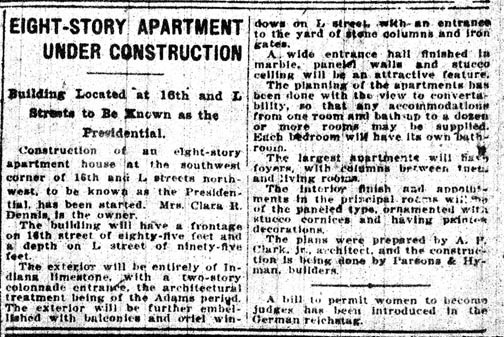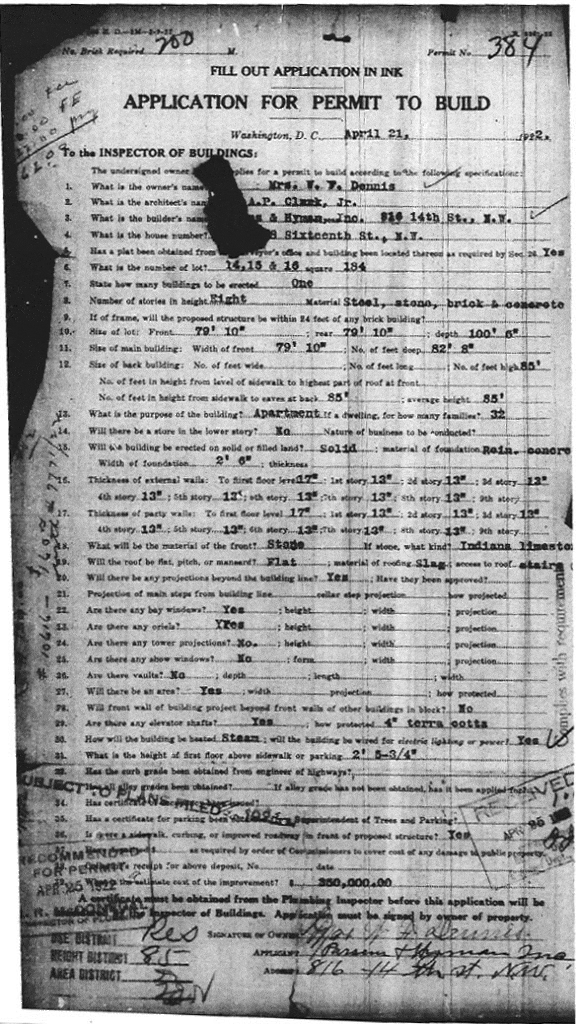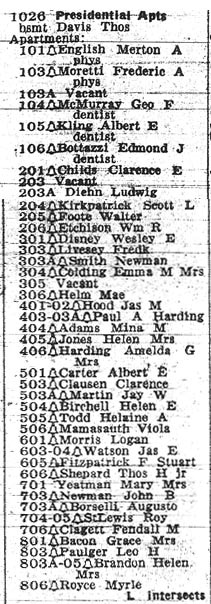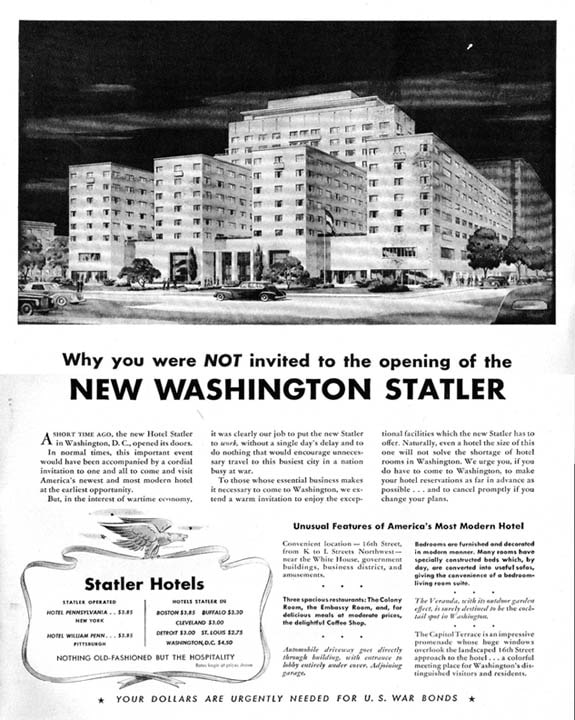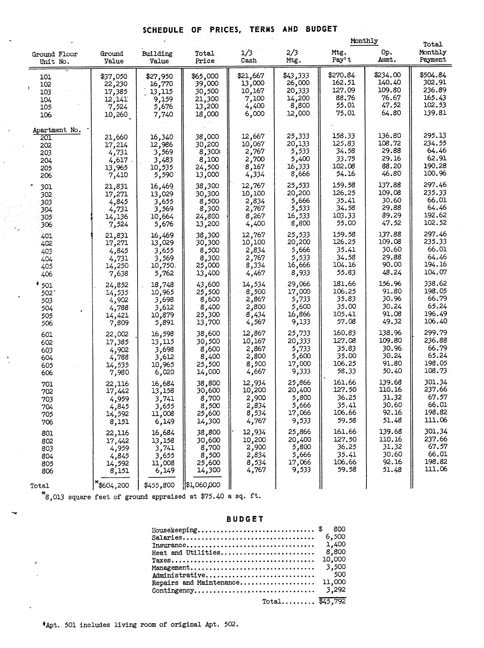History
“Highest-class apartment in the city of Washington”
Superior Living
Henry Ford was named the world’s richest man and the New York Legislature voted to cease enforcement of Prohibition on the day in 1923 that an advertisement appeared in the Washington Evening Star declaring the “highest-class apartment in the city of Washington” ready for occupancy. Three- to 20-room units were available at The Presidential, where “many of Washington’s most prominent families” had already leased space.
With electric refrigeration, an incinerator, walls that had been “canvassed, paneled and painted,” a private bath for each bedroom, and all-night elevator service, The Presidential was touted as “the last word in apartment construction.” The steel-framed, fireproof building also boasted a completely equipped laundry, a storage room for each apartment, and extra servants’ rooms in its basement. It had 46 apartments, including two bachelor units without kitchens on each of its eight floors.
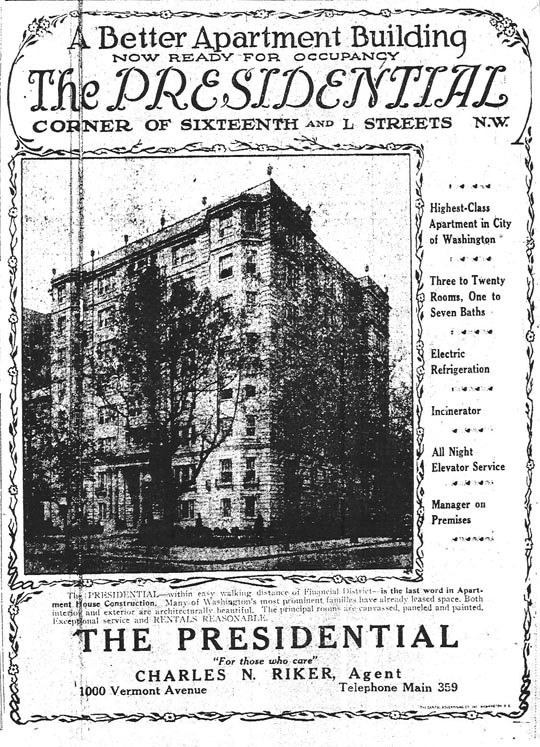
The History of
The Presidential
Original Construction
Built by Mrs. Clara R. Dennis for $350,000, the structure was designed by architect Appleton P. Clark, Jr. (1865-1955), whose projects in Washington included The Roosevelt Hotel at 2101 16th Street (now the Camden Roosevelt Apartments) and Riggs National Bank on Pennsylvania Avenue opposite the Treasury Department. Mrs. Dennis named the building “The Presidential” because she felt it was ideally situated to house members of President Warren G. Harding’s cabinet, who could live in large apartments created by combining several small ones on each floor.
Conversion to Co-Op
In 1959, the Edmund J. Flynn Company, pioneers in co-operative ownership in D.C., converted The Presidential into a cooperative apartment house. Prices ranged from $8,100 for bachelor units to $65,000 for one of the doctor’s suites on the ground floor, and the annual operating budget was $45,792.
Today, as then, The Presidential provides “superior living accommodations for the discerning owner” in a downtown location that is “manifestly ideal.”
